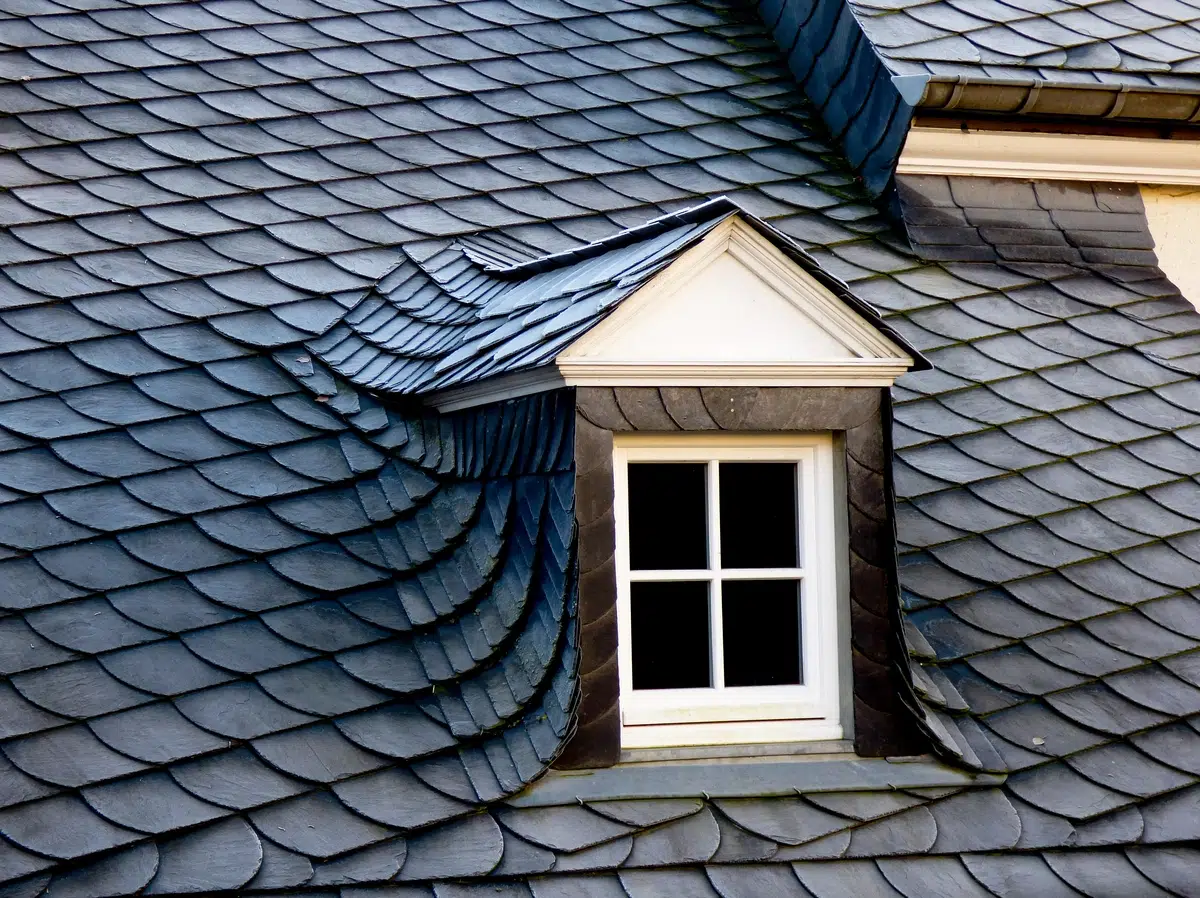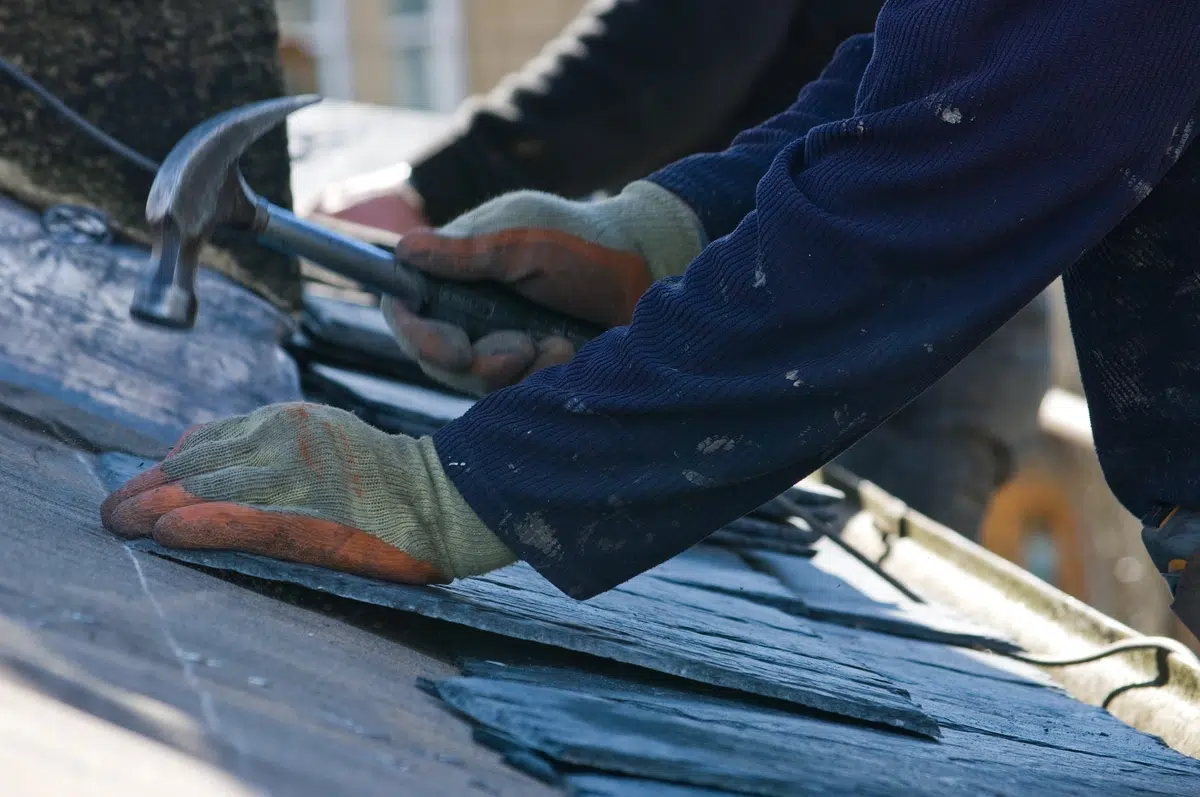If you’re looking for a how to repair slate roof tiles DIY guide, this is it.
Not many roofing materials can match what slate has to offer. It’s naturally beautiful, pure, and can last over a century. This makes it both a rare and incredibly durable roofing system that homeowners and their families can enjoy for generations.
However, to get the most out of your slate roof in terms of longevity, you’ll need to ensure it’s maintained regularly. That means any issues should be repaired quickly, and inspections should be carried out often.
In this DIY slate roof repair guide, we’ll walk you through the steps of repairing individual slate tiles. Read on to learn more.
Things to Consider Before Making the Repairs Yourself
Slate roof repairs can present a lot of obstacles for the average homeowner. Because of this, it’s essential that the bigger jobs are left in the capable hands of a professional roofing contractor.
Here are a few things to think about before attempting to repair pieces of broken slate yourself:
- For effective repairs to be made to a slate roof system, you’ll need to be able to safely gain access to the exact area where the repairs are needed.
- Slate is a natural product. This means that spore-bearing plants like moss will grow on its surface, making it slippery.
- Slate will also become slippery from rain, snow, and even humid conditions.
- Slate isn’t exactly a load-bearing product. Therefore, it’s best to avoid stepping directly on it by using a chicken ladder or equipment that can support your weight while you make the repair.
- Stepping directly on the roofing slate can cause damage to your roofing system in addition to causing slips and falls.

- You also need to ensure that your access to the roof doesn’t cause damage, which means you’ll need to carefully consider where the repair needs to be made and the location’s ease of access.
- Roofing slate isn’t usually sold at conventional home improvement stores. You’ll need to find a specialty roofing supply company that offers matching roofing material.
- Most specialty roofing suppliers only sell large quantities of materials to professional roofing contractors, which means you’ll likely have to buy a large quantity even if you don’t need much.
- Roofing slates are pretty expensive as they cost $10-$15 per square foot.
What You’ll Need
Here is a general list of the tools, equipment, and materials you’ll need to make the repairs:
- The replacement roofing slates
- Copper roofing nails that can penetrate the roof decking by at least ¾-inch
- Sheet copper with 5-inch exposure on the slate plus another 2 inches
- Slate hammer
- Flat pry bar (optional)
- Slate cutter
- Slate ripper (also known as a slate hook)
- Chicken ladder
How to Repair Slate Roofs Yourself
Once you’ve gathered all the materials and have found a way to safely access the damaged area, these are the steps you’ll want to follow:
Remove the Damaged Slate Tile
The broken or damaged tile, as well as the tile’s remnants, must be removed, including the nails.
Use the slate ripping tool by inserting it beneath the bottom edge of the tile or where the tile is missing to loosen it. Use the hooked part of the slate ripper to catch the nails. When you catch a nail, use the hammer to drive the hook down against it. This will allow you to either cut the nail or rip it out completely.
Once you’ve removed the nails, use the hooked part of the tool again to lift up on the slate tiles and slide it out.
Size Up the New Tile
You’ll want to confirm that the replacement slate tiles match the size of the old ones before installing them. Lay the new tile over the area or the old tile (if it’s in one piece) to check whether it’s a good fit or needs to be trimmed with your slate cutter.
Install the Replacement Slate

When installing the replacement tile, you want to be gentle. Don’t nail them too tightly as they are meant to be “hung” in place. Therefore, the copper roofing nails should be hammered down to the point where they are flush with the slate’s surface. Anything more than that can crack the slate, and you’ll have to start over.
Here’s how it’s done:
- Slide the new tile into place. It should be flush with the bottom of its neighboring tiles.
- There will be some resistance. However, if the resistance is great, it means there’s likely a nail or piece of old slate in the way, and you’ll need to go back and clear it with your slate hook.
- Once the new slate is in position, place the first copper roofing nail between the two slates directly above the replacement slate. It should be approximately 2 inches above the bottom of those two slates, and you’ll want to tap it in gently to avoid cracking.
- Install the second copper nail approximately 2 inches above the first nail — this is to prevent the slate from rotating.
Install the Copper Slip
The next part of the installation process is to insert the copper slip. You want each piece to be about 4 to 5 inches wide, with the length matching that of the exposed portion of the tile plus an extra 2 inches, so it extends past the bottom of the slate.
Once you’ve measured it properly, create a slight bend in the middle of the copper slip along the length. This will help create enough tension to keep the slip in place after it’s installed. From there, slide the copper slip underneath the bottom edge of the two slates that are directly above the repair slate and over the new nails.
If needed, you can use your slate hammer to gently tap the bottom of the slip to get it fully positioned into place.
Call a Professional for Roofing Help
Generally speaking, working on a roof comes with inherent risks. Working on a slate roof comes with even more risks. Not to mention, repairing a slate roof yourself can end up being more expensive than paying a roofing professional to do it.
Let the experts at DuraShield Contracting take on those risks. Give us a call today to schedule your slate roofing repair. We’ll even give you a free consultation!
